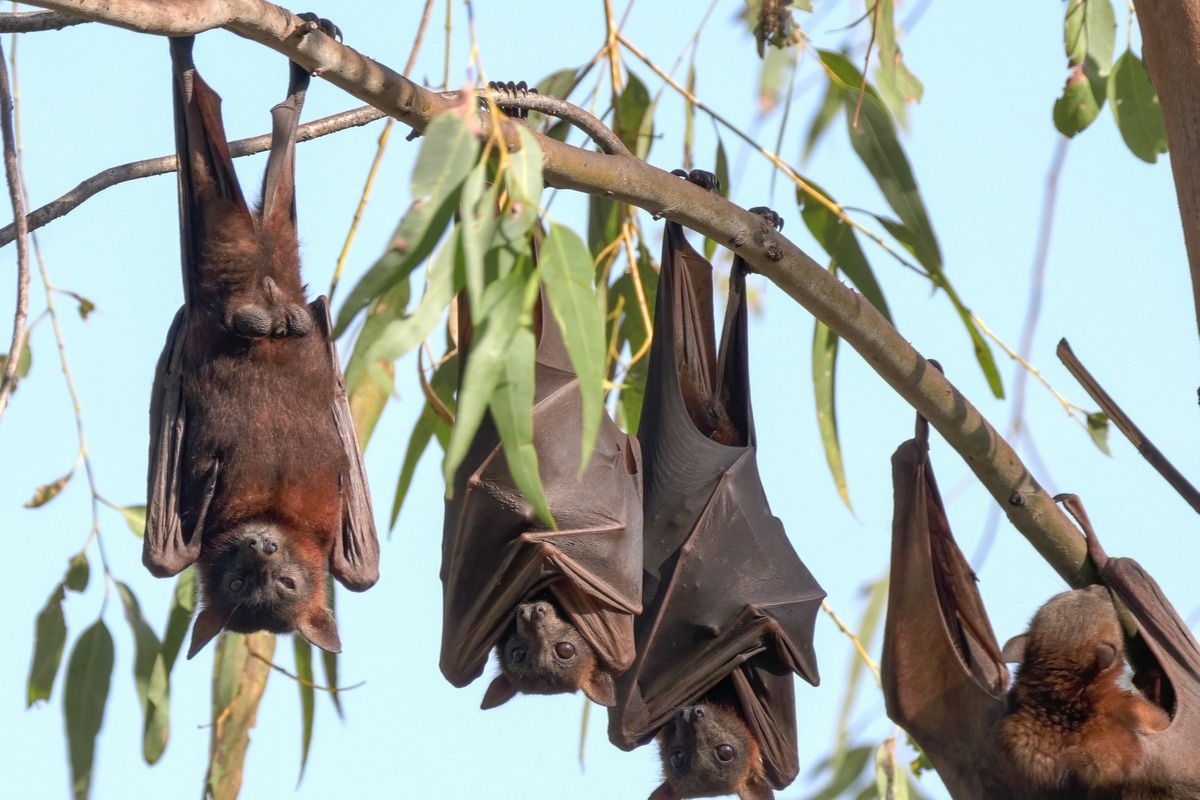compazine versus zofran
In a recent study posted to the EcoEvoRxiv* preprint server, researchers developed a spatial and quantitative framework to explore the biogeography of and map the evolutionary risk of bat-origin beta coronaviruses (βCoVs) such as severe acute respiratory syndrome CoV (SARS-CoV), SARS-CoV-2 and the Middle East CoV (MERS-CoV) based on the geographic mosaic theory of coevolution (GMTC).

Background
The evolution of pathogens is one of the least predictable aspects of disease emergence. The regions highly prone to bat CoV emergence are the ones where pathogen pools are genetically diverse with a high propensity for virus transmission across species. Identifying zones of high emergence risks could benefit both bat conservation and pandemic prevention.
About the study
In the present study, researchers attempted to determine the association between macroevolutionary dynamics and the macroecology and symbiotic interaction biogeography by GMTC-based risk evaluation of bat-origin βCoVs (SARS-CoV, SARS-CoV-2, and MERS-CoV) emergence.
A trivariate system for risk assessment was developed that linked GMTC mechanisms to host-virus interaction aspects such as (i) viral sharing propensity, (ii) phylogenetic diversity of the host, nexium us com and (iii) uniqueness of the host. The rates of viral sharing among host communities represented the potential of host-virus interactions, i.e., regions of constant viral host-switching could be coldspots for coevolution.
The viral sharing propensity aspect represented that frequent virtual transmission across species could be considered selection pressure buffers, while reduced exchange rates could enable simultaneous viral specialization trajectories to coexist in a community. Phylogenetic host diversities were considered a proxy for viral antagonizing-immune variations (the selected mosaic) and comprised highly diverse evolution histories that expose viruses to immunological host trait variations.
The host community’s uniqueness was based on exposure to heterogeneous host traits that could lead to the creation of viral evolutionary branches of high uniqueness. Locally distinct bat communities represented the virus exposure potential for new traits of the host (e.g., receptor sequence variations). The trivariate risk assessment system was combined with transmission processes such as animal-human contacts and the prevalence of viruses in reservoirs to identify and map the drivers of evolution to determine the emergence risks of bat CoVs from bats.
Results
Emergence risk was maximal under high phylogenetic diversity (viruses exposed to differing host clades), increased host uniqueness (virus exposure to new and heterogeneous traits of the host), and medium or low viral sharing (independent host-virus coevolution although divergent viruses could recombine). GMTC principles indicated that high-risk geographical areas were distinct from the coldspots and hotspots rich in host populations.
Bat community-based assemblies were responsible for the global viral evolutionary mosaic. The distinct geographical subgroups were South Asia and Southeast Asia; the Mediterranean coast, East Asia (inclusive of North China) and West Asia; Eurasia above 40 northings; and Latin America and Africa. A high codivergence rate was found in Latin America, contrasting to high viral distinctiveness and host richness, but low viral sharing was observed in Southeast Asia.
The framework could explain patterns such as unique merbecoviruses pools in the Neotropical region (especially the Amazon), a recently-detected divergent norovirus variant in Madagascar, and of paramount importance–diversified hotspots in South East Asia, the Middle East, and the sub-Saharan regions of Africa corresponding to the region of previous zoonotic emergence events.
Most parts of Europe and South America were identified as low-risk regions, whereas the Northern Australian coast and Malaysia were identified as high-risk regions. India, Southeast Asia, and sub-Saharan regions of Africa were identified as high-risk regions due to overlapping between the human population and cross-species βCoV transmission opportunities in the natural environment.
The team mentioned that SARS-CoV-2 originated from a sarbecovirus variant in Indochina, which was not characterized well before the SARS-CoV-2 pandemic, and SARS-CoV originated from cave-residing horseshoe bats of Yunnan. The team reported increased MERS-CoV prevalence in the Middle East and East Africa, although bat-to-camel transmission is uncertain.
The global pattern of βCoV phylogenetic distinctiveness was quite distinct from bat host richness and phylogenetic distinctiveness. Central and South America had the most evolutionary distinct hosts and viruses, followed by secondary hotspots in regions of the Rift Valley and the southeastern parts of Asia. High viral sharing regions such as Eurasia above northing of 30 and Latin America would have lower risks of zoonotic emergence.
Regions comprising unique hosts with high viral sharing could lead to viral codivergence-facilitated hotspot creation. The association between the pathogen pools and the zoonotic emergence risk was mediated by human-animal contact (spillover probability) and horizontal transmission opportunities (spillover transforming to epidemic probability).
New World merbecoviruses bat species such as Mormoopidae, Phyllostomidae, and Molossidae could be considered hosts for βCoV coevolution. Rhinolophidae (Horseshoe bats) were reservoirs of SARS-like sarbecoviruses. High host-enriched hotspots and virus diversity were observed in Southeast Asia, considering adaptive virus radiation via host switching as drivers of bat richness.
Conclusion
Overall, the study findings highlighted the coevolutionary dynamics of bat βCoVs using a spatial framework and showed that bat and βCoV biogeography were largely consistent with distinct hotspots. Local-scale coevolutionary mosaics could form in cophylogenetic regions, and human landscapes filtered the geography of emergence risk. The framework could aid in identifying potential high-risk hotspots such as West Africa and India and could contribute to understanding virus diversification and evolution based on host ecology.
*Important notice
EcoEvoRxiv publishes preliminary scientific reports that are not peer-reviewed and, therefore, should not be regarded as conclusive, guide clinical practice/health-related behavior, or treated as established information.
- The coevolutionary mosaic of bat betacoronavirus emergence risk. Norma Forero Rocio Munoz, Renata L. Muylaert, Stephanie N. Seifert, Gregory F. Albery, Daniel J. Becker, Colin J. Carlson, Timothée Poisot. 2022. EcoEvoRxiv. doi: 10.32942/osf.io/8mgv6 https://ecoevorxiv.org/8mgv6/
Posted in: Medical Science News | Medical Research News | Disease/Infection News
Tags: Coronavirus Disease COVID-19, Evolution, MERS-CoV, Norovirus, Pandemic, Pathogen, Receptor, Respiratory, SARS, SARS-CoV-2, Severe Acute Respiratory, Severe Acute Respiratory Syndrome, Syndrome, Virus

Written by
Pooja Toshniwal Paharia
Dr. based clinical-radiological diagnosis and management of oral lesions and conditions and associated maxillofacial disorders.
Source: Read Full Article
